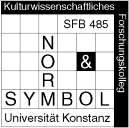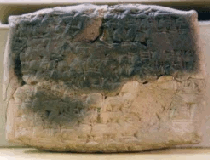.The Project
Yoram Cohen, Lorenzo d’Alfonso, Dietrich Sürenhagen (January 2008)
 In the year 2004 the research project "Control, Interaction, and Interdependency –
The Hittite Empire and its Provinces during the 14th-12th Centuries BCE" was initiated
by Dietrich Sürenhagen, Lorenzo d’Alfonso (Konstanz University) and Yoram Cohen (Tel Aviv University).
The project was supported for three years (summer 2004 to summer 2007) by the Kurt Leon Foundation,
Konstanz – Tel Aviv. Additional support was received from the SFB 485 "Norm und Symbol", Konstanz University
(2006).
In the year 2004 the research project "Control, Interaction, and Interdependency –
The Hittite Empire and its Provinces during the 14th-12th Centuries BCE" was initiated
by Dietrich Sürenhagen, Lorenzo d’Alfonso (Konstanz University) and Yoram Cohen (Tel Aviv University).
The project was supported for three years (summer 2004 to summer 2007) by the Kurt Leon Foundation,
Konstanz – Tel Aviv. Additional support was received from the SFB 485 "Norm und Symbol", Konstanz University
(2006).
.Main Objectives
The project focussed on the City of Emar, and aimed at studying the political, social, and cultural features of this ancient multicultural port on the Euphrates. The city, under the control of the Mittanni state for the first half of the 14th century, became part of the Hittite empire at the time of the campaigns of king Suppiluliuma in Northern Syria. It remained under Hittite subjugation, although it knew periods of independence, until its destruction circa 1175 BCE (following the Low Chronology). Being under Hittite dominion did not prevent the city from having intense contacts with the neighbouring kingdoms of Assyria and Babylonia, the consequence of which is evident throughout different domains, such as the city’s social institutions, language, religion, and architecture. However, in spite of external influences, and the conquests of foreign powers, the city retained its unique culture. Hence, the core aim of our research project was to investigate the modus of co-existence between the local culture and the incoming influx of new trends and ideas of the imperial powers in the cultural and social spheres. Both Cohen and d’Alfonso have dealt with this problem separately and together in recent contributions.
When the research project was began, it was evident that two preliminary steps were to be taken in order to reach a fuller understanding of the problems we wished to deal with. These were:
- An assembly of references in the scholarly discussions to each and every epigraphic source; and
- A re-analysis of the chronology of Emar based on a proper ordering of the textual sources.
The second objective was dealt with Cohen and d’Alfonso in their contribution to the Konstanz-Emar conference, held at the University of Konstanz in April 2006, which also saw other colleagues discuss this core question. ( The proceeding have been published in 2008: L. d’Alfonso – Y. Cohen – D. Sürenhagen, The City of Emar among the Late Bronze Age Empires. History, Landscape, and Society, AOAT 349, Münster 2008). The first objective of the assembly of references concerned with the reading, interpretation, integration and translation of the Emar cuneiform texts was achieved by the creation of a database. We came then to the idea to publish this database online, taking as a model the online Concordance of the Hittite Texts database complied and edited by Silvin Košak.
